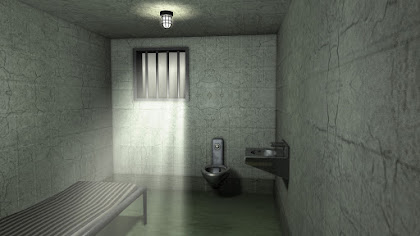Solitary confinement is inhumane

This form should be outlawed and considered inhumane by every nation in the world. On a given day last year, an expected 55,000 to 62,500 individuals had spent the past 15 days in isolation in state and government detainment facilities, frequently in cells less than a stopping space.1 Correctional authority frequently safeguard their successive utilization of isolation as a powerful method for keeping everything under control and preventing savagery and group movement. Be that as it may, this dependence on singular disregards the wealth of studies showing the unsafe and frequently enduring impacts it unleashes on the human brain and body.
At the International Symposium on Solitary Confinement, supported by Thomas Jefferson University in November, analysts and previously detained individuals clarified that any "positive" benefits remedial organizations gain by utilizing isolation are offset by the serious and frequently long-lasting harms brought about by delayed separation. Late examinations show that time spent in isolation abbreviates lives, even after delivery, and speakers at the International Symposium underlined different alternate ways single causes unsalvageable damage.
Isolation goes by many names,
including "extraordinary lodging units," "regulatory
isolation," "disciplinary isolation," and "prohibitive
lodging," however the circumstances are by and large something very
similar: 22 to 24 hours out of every day burned through alone in a little
cell.2 The training is broad in correctional facilities, jails, ICE confinement
focuses, and adolescent offices, and individuals are much of the time shipped
off singular for obscure reasons or minor offenses. Dark and Hispanic
individuals, are now overrepresented in remedial offices, are further
overrepresented in isolation. Lone isn't only utilized for brief timeframes, by
the same token: many individuals are bound without human association for a
really long time, and in some cases even decades.3
Detainment facilities and prisons are as of now innately unsafe and putting individuals in isolation add an additional weight of pressure that has been displayed to make super durable changes to individuals' minds and characters. As a matter of fact, the piece of the mind that assumes a significant part in memory has been displayed to contract after extensive stretches without human cooperation truly. Furthermore, since people are normally friendly creatures, denying individuals of the capacity to mingle can cause "social agony," which specialists characterize as "the sensations of harmed and trouble that come from pessimistic social encounters like social hardship, avoidance, dismissal, or misfortune." Social agony influences the cerebrum similarly as actual agony, and can really make more enduring due to people's capacity to remember social torment months or even years after the fact.
The impacts of isolation on emotional wellness can be deadly. Despite the fact that individuals in isolation contain simply 6% to 8% of the all-out jail populace, they represent around half of the people who bite the dust by self-destruction. Relatedly, perception cells in detainment facilities, which are utilized for self-destruction watch — frequently with comparable circumstances to isolation — are lopsidedly loaded up with moves from isolation. Individuals frequently cycle between the two units without getting sufficient expert assistance to address their hidden psychological well-being concerns.
Regardless of whether
somebody enters singular with an emotional wellness condition, it's workable for
them to foster a particular mental disorder because of the impacts of
separation. Dr. Stuart Grassian, who initially recognized the condition,
noticed that it is portrayed by ever-evolving powerlessness to endure common
things, like the sound of plumbing; visualizations and deceptions; extreme fits
of anxiety; challenges with thinking, focus, and memory; over the top, at times
hurtful, considerations that will not disappear; neurosis; issues with
motivation control; and ridiculousness.
Robert King and Jack Morris,
who spent a joined 62 years in isolation, highlighted a large number of the
above discoveries at the International Symposium on Solitary Confinement. Mr.
King noticed that sooner or later, he lost his advantage in imparting and
encountered a close-to-home deadness that prompted a deficiency of fundamental
abilities. Indeed, even since his delivery from jail in 2001, Mr. King says he
battles with straightforward things, including his internal compass. Research
demonstrates that numerous issues individuals create while in isolation
frequently persevere upon their re-visitation of everyone or their delivery to
the rest of the world.
The unsalvageable harms
brought about by isolation are outlandish and have driven the Union Nations to
consider single torment when utilized for longer than 15 continuous days.
However, this mind-boggling research is much of the time disregarded in
correctional facilities and jails, where isolation is habitually utilized as an
"answer" to essentially every issue that emerges, including defiance,
saw dangers, claimed group connection, and even evidently for people's own
security. Furthermore, as penitentiaries keep involving lockdowns because of
COVID-19, letting many individuals be or with a fellow prisoner in restricted
spaces for 24 hours per day, understanding the harmful impacts of single and
changing these practices is a higher priority than any time in recent memory.


Comments
Post a Comment